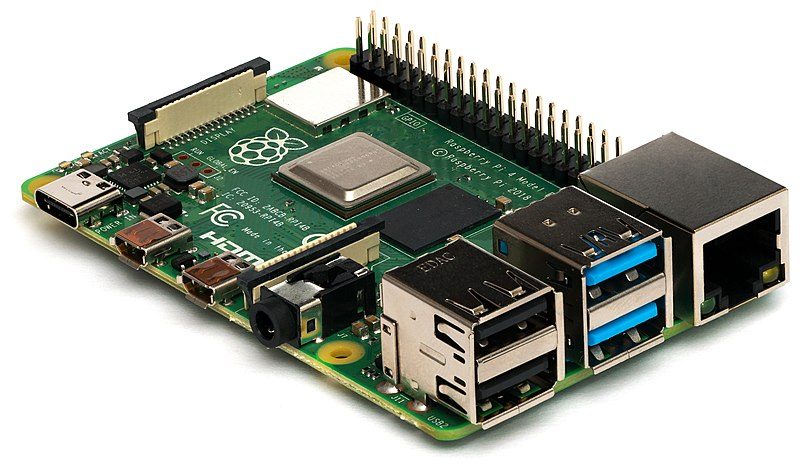Raspberry Pi vs Arduino
Raspberry Pi

The Raspberry Pi was developed by the Raspberry Pi Foundation at Cambridge University in the UK as a low-cost computer for students to learn programming.
The Raspberry Pi has all the features of a typical PC, including CPU, graphics driver, memory, operating system, Ethernet, Bluetooth, and WiFi. This is why systems like the Raspberry Pi are also called Single Board Computers (SBC).
Users can connect keyboards, monitors, mice, etc., and perform all the tasks possible on a PC, such as using the internet, playing music/videos, and programming. It also provides 40-pin GPIO, making it possible to connect and control external devices or communicate with them.
CPUs used in PCs and Raspberry Pi are called microprocessors, which can perform complex calculations and graphics processing. They also support multi-threading, allowing multiple tasks to be performed simultaneously.
However, it is relatively more expensive than Arduino, and while various programming languages such as Python, C/C++, and C# can be used to control external devices, it lacks a dedicated development environment (IDE) and has insufficient open-source libraries.
Arduino

Arduino is an open-source hardware/software platform developed by Massimo Banzi and Professor David Cuartielles in Italy, designed to be an affordable and easy tool for easily controlling peripherals such as sensors and actuators.
Arduino is a microcontroller-based small board that has all the necessary functions built-in to directly control external devices. However, Arduino has no firmware or operating system, so it must be programmed in C/C++ language on an external PC and then uploaded.
Features such as internet, music/video, Bluetooth, and WiFi are not built-in, and the CPU performance is low, making complex calculations or graphics processing impossible. It also cannot execute multiple tasks simultaneously and can only execute one task at a time.
However, it is specialized for controlling external devices, can be programmed using a dedicated development environment (IDE), can utilize various open-source libraries, and has the advantage of being very affordable.
Comparison
| Item | Arduino | Raspberry Pi |
|---|---|---|
| CPU Type | Atmega Family (Microcontroller) | ARM Family (Microprocessor) |
| CPU Clock Frequency | 16 MHz (Arduino UNO) | 1.5 GHz (Raspberry Pi 4B) |
| RAM | 2kB | 1 GB or more |
| CPU Architecture | 8-bit | 64-bit |
| Logic Level | 5V | 3.3V |
| Current Consumption | 15mW (Nano) ~ 100mW (Due) | 100mW (Pi Zero) ~ 600mW (Pi 4) |
| Operating System | None | Linux-based |
| GPIO | O | O |
| Analog Input | O | X |
| Ethernet/WiFi | Additional module required | Built-in |
| Bluetooth | Additional module required | Built-in |
| Music/Video Playback | Additional module required | Possible |
| Programming Language | C/C++ | Grablo, Python, C/C++, C#, Java, etc. |
| Performance | Low performance | High performance |
| Simultaneous Tasks | X | O |
| Applications | External device control (LED, motors, etc.) | Network, multimedia, image processing, external device control, etc. |
| Price | From about $3 | From about $20 |
